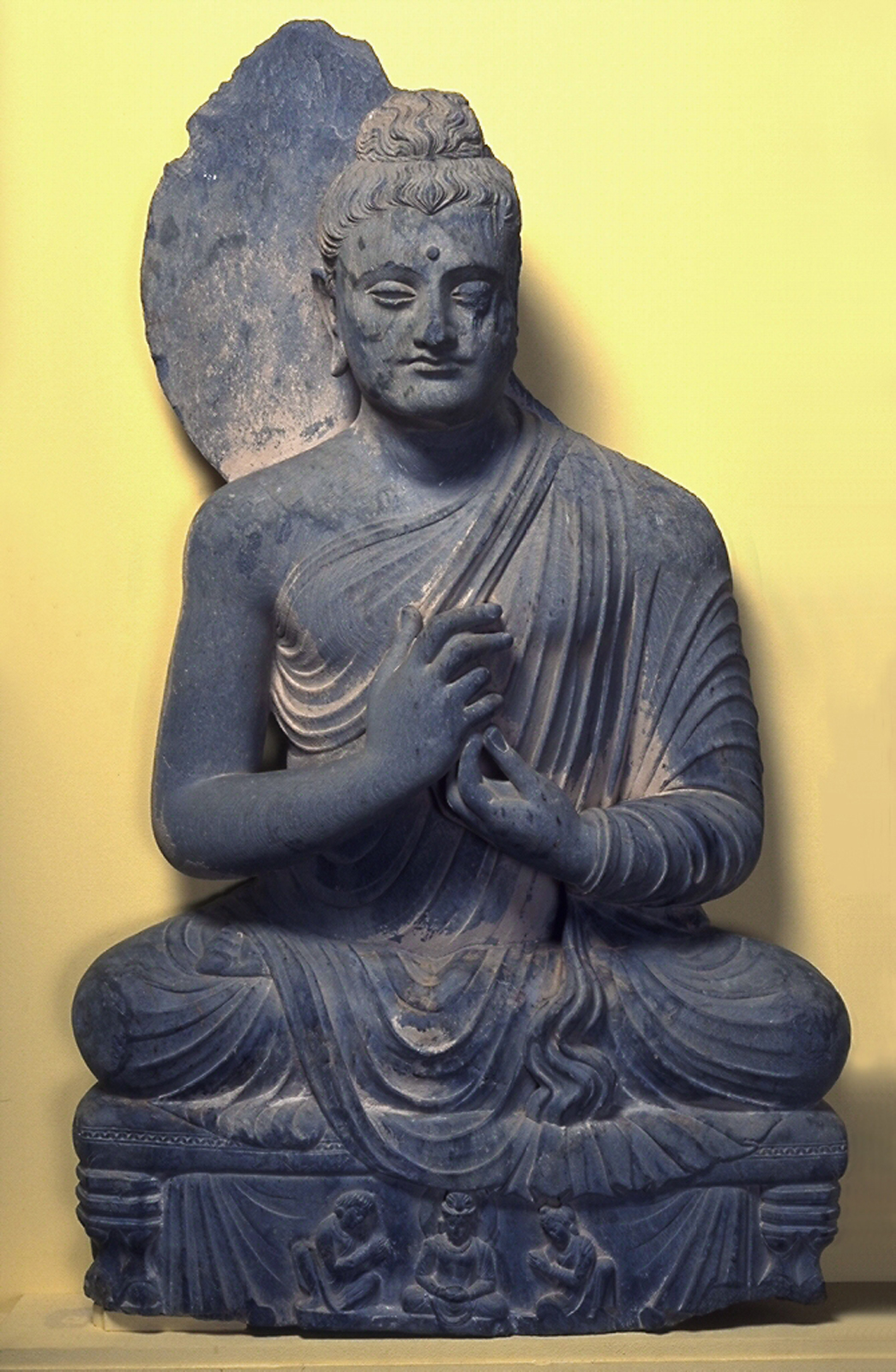The earliest surviving representations of the Buddha date from hundreds of years after his death, so they are not portraits in the usual sense. Buddha images vary greatly from place to place and period to period, but they almost always show these conventional features:
- Symbols of radiance. Among these may be a halo around the head or whole body, a flame at the top of the head, or a gold-covered surface.
- Superhuman physical characteristics such as very large size, a lump on the top of the head sometimes said to indicate extraordinary wisdom, fingers all the same length, or special markings on the palms and on the soles of the feet.
- Long earlobes, stretched during the years when the Buddha-to-be, as a prince, wore heavy earrings.
- Monk’s robes. Monks wore a sarong-like lower garment and one or two upper garments, each made of a sheet of cloth wrapped around the upper body, sometimes leaving the right shoulder bare.
- Special positions and gestures. The most common position is seated with the legs crossed or interlocked. Common hand positions are:
- right hand over right knee (symbolizing the Buddha’s calling the Earth as a witness during his victory over negative forces)
- right hand held up with palm out (symbolizing giving reassurance)
- hands held at chest with fingers turning invisible wheel (symbolizing setting in motion the “wheel of the doctrine”—that is, preaching)






